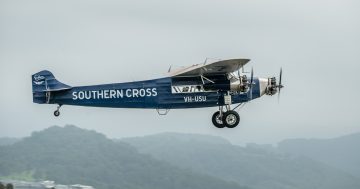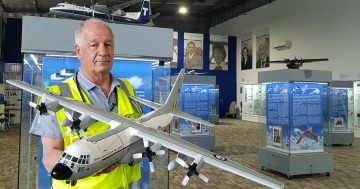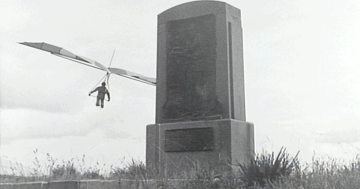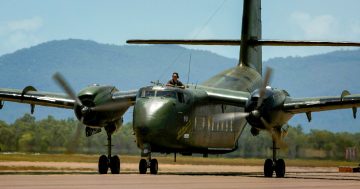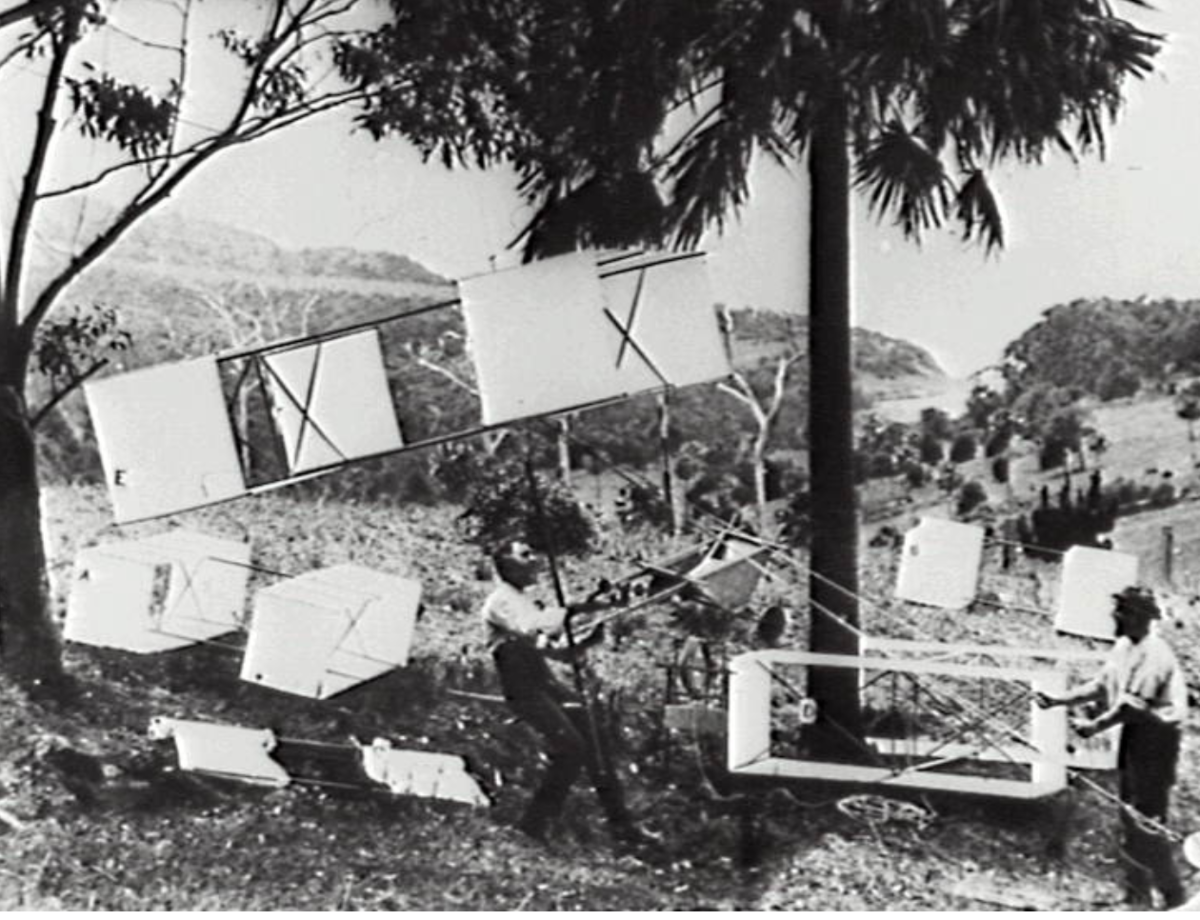
Lawrence Hargrave working on a box kite around 1894. Photo: Wollongong City Libraries and the Illawarra Historical Society.
This Sunday (12 November) the Historical Aircraft Restoration Society Inc (HARS) will stage a spectacle over Stanwell Park to help raise awareness of an incredible local story that many people, including locals, still don’t know.
On that date in 1894, long before the Wright brothers flew the world’s first successful motor-operated aeroplane, Australian inventor Lawrence Hargrave sat on a seat attached to a string of four tandem box kites of his own design and flew almost five metres off the ground at Stanwell Park Beach, stopped only by the sandbags he was tethered to.
Lawrence Hargrave School teacher, Stanwell Park resident and president of the Lawrence Hargrave Society Robert Deacon says the significance of the groundbreaking invention, which was later incorporated into the Wright brothers’ famed glider designs, could not be overstated.
“In reality this was the first proof that stable, heavier-than-air vertical lift-off and landing was possible,” he says.
“It was a big breakthrough.”
While this invention alone could have made Hargrave a global household name, it was later discovered that Hargrave had also designed an aeroplane. But Australia was an isolated country in the 1890s, and he didn’t have the resources to build it. Researchers at Sydney University built it in 2001 – and it flew.
“The design worked. Had he had the resources, who knows what he could have achieved. He might have been the first person to fly,” Mr Deacon says.
“Hargrave shared his ideas freely; he didn’t believe in patents. He published his work so that people all around the world could use them.
“If you look at how the first Wright brothers’ planes were put together, the influence from his box kite design is plain to see. The planes built in Europe, which also used his designs, were the ancestors of the modern planes.”

Lawrence Hargrave, circa 1912. Photo: Wollongong City Libraries and the Illawarra Historical Society.
Though his inventions have retrospectively been lauded as some of the most significant in aviation history, it was Hargrave’s discoveries in aerodynamics and mechanical engineering that had the most lasting impact on modern aviation.
It was Hargrave who developed a peculiar wing shape – thicker at the front and thinner and the back – that offered greater lift. This curved shape is used today.
And the rotary engines used by the Wright brothers and in the highly respected French designs, were his.
“When you combine these three things – the box kites, the curved wings, the rotary engines – it seems without him, flying would not have been possible at that time,” Mr Deacon says.
“Alexander Graham Bell once came to visit Hargrave and he said that no one person has contributed more to early aeroplanes than Lawrence Hargrave.”
The promulgation of this piece of aviation history later became a lifelong passion for former ABC broadcaster and local resident Eric Waite.
He was the former president of the Lawrence Hargrave Foundation – a group of local residents and people who wanted to achieve recognition for the inventor as one of the true aviation pioneers.
And now HARS is set to play its part in raising the profile of this story when they conduct the Lawrence Hargrave Eric Waite Memorial Fly-Over on the 129th anniversary of Lawrence Hargrave’s box kite experiment at Stanwell Park Beach.
Three or four aircraft that will fly in spectacular tribute to both men, will be best viewed from Bald Hill or Stanwell Park Beach.
“The view from Bald Hill in particular, over Sea Cliff Bridge and up and down the coast, is quite possibly one of the most spectacular views in Australia,” Mr Deacon says.
“From there you’ll actually be above the planes as they pass by, so you’ll be looking at them fly virtually underneath you.”
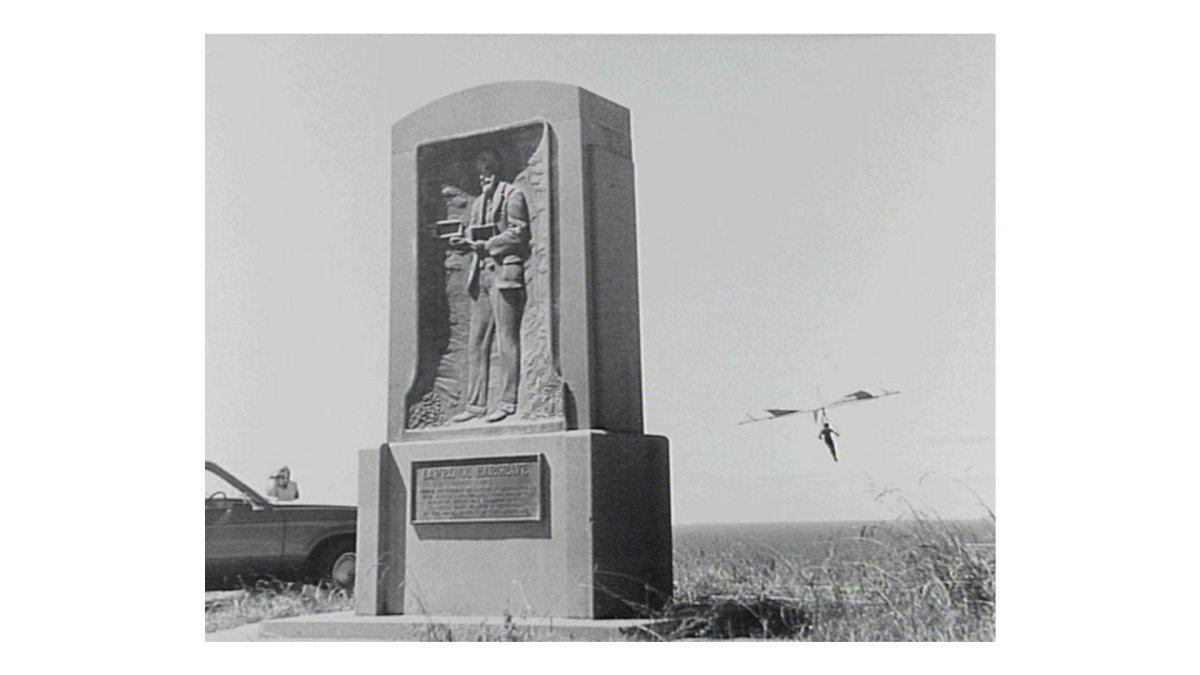
The Lawrence Hargrave Memorial at Bald Hill, where the inventor carried out many of his aeronautical experiments, was opened in 1940. Photo: Wollongong City Libraries and the Illawarra Historical Society.
HARS’ participation is a relatively recent addition to the local tradition of marking 12 November with an aerial display.
It began in 2001 as a relatively humble kite-flying day that Mr Deacon organised with local schoolchildren, to help curb the repeated vandalism of the Lawrence Hargrave Memorial at Bald Hill.
The event would eventually become an annual spectacle with more than 1000 kites and skydivers. Importantly, children would take an oath of custodianship over the memorial, and would eventually become instrumental in its protection.
“I figured if local kids knew the story, they would respect and value it more,” he says.
“Vandalism is rare now.”
COVID-19 forced a major reduction in the scale of the spectacle over the past few years, but the hope is it will soon return as an annual spotlight on that momentous day in the Illawarra’s history.
The Lawrence Hargrave Eric Waite Memorial Fly-Over takes place on Sunday 12 November at 11 am, over Stanwell Park. The best vantage points will be Bald Hill or Stanwell Park Beach.









